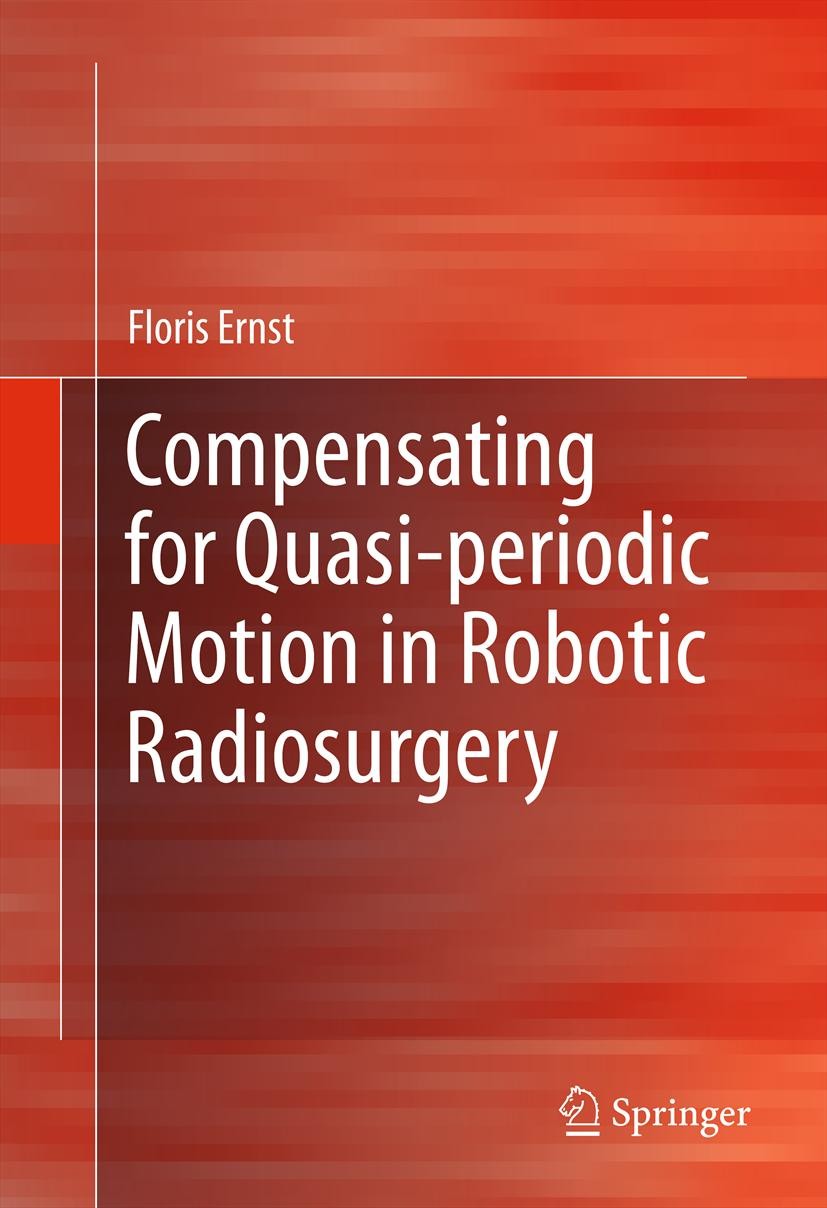| 書目名稱 | Compensating for Quasi-periodic Motion in Robotic Radiosurgery | | 編輯 | Floris Ernst | | 視頻video | http://file.papertrans.cn/232/231098/231098.mp4 | | 概述 | Describes in great detail the technology behind the advanced motion compensation algorithms used in radiotherapy.Explores cutting-edge, new algorithms for motion prediction and correlation.Surveys an | | 圖書封面 |  | | 描述 | .Compensating for Quasi-periodic Motion in Robotic Radiosurgery. outlines the techniques needed to accurately track and compensate for respiratory and pulsatory motion during robotic radiosurgery. The algorithms presented within the book aid in the treatment of tumors that move during respiration. .In Chapters 1 and 2, ?the book introduces the concept of stereotactic body radiation therapy, motion compensation strategies and the clinical state-of-the-art. In Chapters 3 through 5, the author describes and evaluates new methods for motion prediction, for correlating external motion to internal organ motion, and for the evaluation of these algorithms’ output based on an unprecedented amount of real clinical data. Finally, Chapter 6 provides a brief introduction into currently investigated, open questions and further fields of research. .Compensating for Quasi-periodic Motion in Robotic Radiosurgery. targets researchers working in the related fields of surgical oncology, artificial intelligence, robotics and more. Advanced-level students will also find this book valuable.. | | 出版日期 | Book 2012 | | 關鍵詞 | atrial fibrillation; cancer treatment; correlation algorithm; motion compensation; pulsatory motion; radi | | 版次 | 1 | | doi | https://doi.org/10.1007/978-1-4614-1912-9 | | isbn_softcover | 978-1-4899-9528-5 | | isbn_ebook | 978-1-4614-1912-9 | | copyright | Springer Science+Business Media, LLC 2012 |
The information of publication is updating

|
|
 |Archiver|手機版|小黑屋|
派博傳思國際
( 京公網(wǎng)安備110108008328)
GMT+8, 2025-10-5 11:57
|Archiver|手機版|小黑屋|
派博傳思國際
( 京公網(wǎng)安備110108008328)
GMT+8, 2025-10-5 11:57


